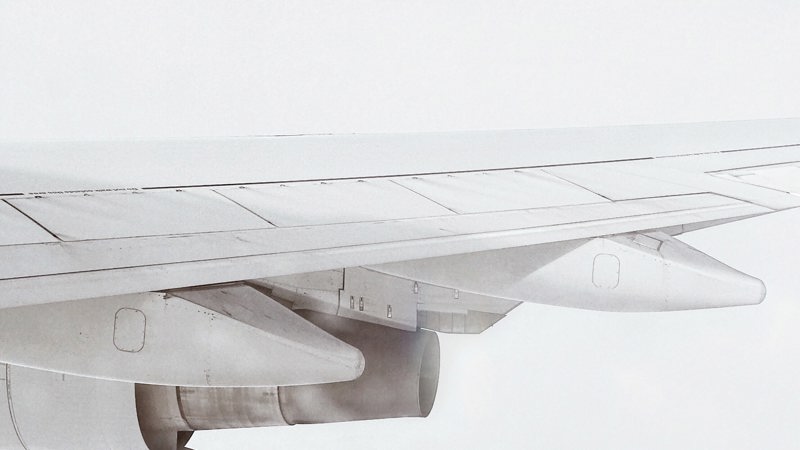
The aviation sector in Europe is on a very bumpy flightpath to recovery, with uncertainty as to when, and to what extent, traffic may return to pre-Covid levels. This has implications for the route networks that airlines will be prepared to operate and, in turn, for hub and regional airports. Meanwhile, in the US, the recovery appears to be more advanced. In this bulletin, we examine patterns in the data from the US to shed light on what may lie ahead for Europe.
Introduction
With the onset of Covid-19, passenger air traffic in Europe plummeted to virtually zero in the spring of 2020. Flights were almost entirely restricted to the repatriation of citizens caught overseas by the pandemic. After the first wave had passed, there was some uptick in demand, including a certain volume of summer holiday traffic, albeit still painfully low by historical standards. This partial rebound has now stalled with the second wave of the pandemic hitting Europe, although hopes for widespread vaccination in 2021 have revived cautious optimism about a recovery in air travel.

Recovery raises a number of issues about how the aviation industry in Europe will “build back”, which we plan to address in a series of bulletins.
Here we are interested in the impact the shock may have on airline route networks, particularly in Europe: what this may mean for the prospects of network carriers and point-to-point airlines, and the consequences for hub and regional airports.
The drastic fall in air traffic has affected almost all routes, and there is no reason in principle to suppose a particular route should be hit more badly than any other. But this does not mean airlines will respond to the slump in demand in the same way on all routes. We are especially interested in whether the drop in air traffic may have a disproportionate impact on less popular routes and consequently on smaller regional airports which tend to serve these “thin” routes.
The reason to think this is that the airline economics of popular and less popular routes differ. Airlines have a range of costs associated with supporting individual routes which don’t scale perfectly at the lowest level. There are semi-fixed costs to do with marketing routes, while the airline also incurs maintenance, ground handling and other costs at the destination airport. Then there is the aircraft itself. Airlines have a strong incentive to achieve the highest possible load factor on each flight to make efficient use of the aircraft. When demand falls on busy routes, airlines can choose between flying empty seats and reducing service frequency. In the short run they will do a bit of both, but on balance a fall in demand will lead them to take flights out of the schedule to try and maintain load factors. On thin routes an airline may not have this luxury. For many routes a minimum feasible frequency is required to meet the needs of the travellers using it. Once it has fallen to that level, the airline has a choice between maintaining the frequency and flying empty seats, or cutting the service altogether.
So, assuming air traffic recovers in Europe, but remains significantly below pre-Covid levels for some time, we might expect to see a shift in European air services away from thin routes serving smaller regional airports coupled with a greater concentration of traffic on more popular routes serving larger centres.
Looking at current data for Europe cannot cast much light on the outlook because nothing resembling a steady state has had a chance to establish itself since the pandemic broke out. The US, however, has seen a somewhat different pattern of air traffic as the pandemic has set in. As elsewhere, international flights have fallen to next to nothing as a result of extensive travel restrictions. The drop in domestic US air travel, however, has been more limited – though still substantial - and since July has displayed more stability than we have observed in Europe.

Given its huge geographic size, what has happened in the US domestic market over the last six to nine months is an interesting pointer to what Europe might face in terms of changing route patterns once traffic starts to build up again.
Lessons from the US
To carry out our case study, we have compared changes in the pattern of domestic departures and passengers in the US between November 2020 and November 2019.
In November 2020, the total number of domestic departures from all airports in the US was 40% lower than in November 2019, and 13% of all routes (defined at the level of city-pairs) had been dropped entirely. To delve deeper, we categorised all routes into different frequency buckets. These ranged from the thickest, busiest routes, typically between major cities, to the thinnest, least frequently operated routes, typically between regional airports. We see that frequencies have fallen by around 35%-45% across the board. While nearly all the thickest routes have survived, more than 30% of the thinnest routes have been withdrawn, with the proportion of dropped routes increasing as frequency decreases.

This result matches our economic intuition of how airlines are likely to approach the current situation. There has been a blanket decline in demand because of Covid, but in practice the decrease may vary significantly at the level of individual routes, and in ways that may be difficult for airlines to predict. In response to this uncertainty, and bearing in mind the cost considerations outlined above, airlines are likely to find it a safer option to bring back capacity more quickly on thicker routes with more diversified demand. Thinner routes, by contrast, could be more exposed to the risk of demand dwindling to the point where they may no longer be commercially viable, even at low levels of frequency. The reluctance of airlines to operate thin routes that might lose money is understandable, but their risk-averse approach may mean that some routes which remain viable have not yet been reinstated.
The charts below present a regional angle.

The results are mixed, and perhaps reflect a patchwork of regional responses to Covid as well as other noise and idiosyncratic differences. However, we observe that:
Smaller airports have seen a larger reduction in departures on average, suggesting that they may have to endure financial difficulty for longer and potentially even face closure; and
Smaller cities have seen a larger reduction in routes on average, suggesting that regional cities may find themselves cut off for longer.
These findings lend some support to the hypothesis that as it recovers, the aviation market will concentrate connectivity on a smaller number of thicker routes focused on larger cities. Smaller destinations will continue to be served, but less frequently and more as spokes from major hubs rather than with their own network of point-to-point services. This is not to say that only network carriers will operate these trunk routes. Low-cost carriers will do so too. Indeed, network carriers may come under even greater pressure than before to cut costs and converge towards their lower-cost competitors.
Looking at flight schedules alone is helpful but provides limited insight into what is going on at the passenger level and any differences between airlines operating point-to-point flights and those offering connecting services. So one final piece of evidence we have reviewed is the breakdown of passenger journeys in the US between direct flights and multi-stop journeys. On the whole, we do not think travellers choose connecting flights over direct ones because they prefer them per se. Rather we expect the pattern to reflect the services airlines are offering, with passengers choosing on the basis of availability/convenience and price. More specifically, we see no reason to expect Covid to affect passenger preferences, so any shift we observe more likely mirrors changes in the services on offer.
Interestingly we see that the share of journeys made non-stop fell from 74% in September 2019 to 66.5% in September 2020. Looking at passenger numbers (as a proportion of 2019 monthly averages) we see that both non-stop and connecting flights slumped equally from March to April, but since then connecting journeys have recovered more strongly than direct flights.

This final piece of evidence seems to confirm a slight shift in the US towards a greater emphasis on hub-and-spoke operations in response to the Covid crisis.
It remains to be seen whether this pattern will also emerge in Europe, but the evidence from the US provides some insight into what may come next.
What next?
The evidence from the slowdown in the US, although admittedly limited, does suggest that the recovery of air travel in Europe could be accompanied by a consolidation of routes. If so, airlines would focus more on existing thick routes serving more major airports, with a relative decline in connectivity on thinner routes and to smaller regional airports.
This trend may be amplified by “green strings” packages, which we have started to see applied to some airline bailouts. In the case of Air France and Austrian Airlines, their national governments have indicated that they are prepared to intervene in transport markets to actively discourage short-haul/domestic flights, and to move this traffic where possible onto rail.
None of this mean that services to smaller airports will cease altogether, but they may find themselves more reliant on feeder services from major hubs rather than on existing point-to-point flight offered by low-cost carriers.
If this is what the immediate future holds for Europe, then it raises a number of policy questions, as well as competition and regulation issues:
- Support for regional airports: smaller, more regional airports may take longer to recover. If airports continue to operate at a loss, they could face temporary or even permanent closures. Governments would need to consider whether support packages were needed, and if so, what form they should take. State aid issues could arise.
Support packages could come with conditions attached. Any positive-sounding green strings could, as already indicated, make matters worse for regional airports. For what it’s worth, our view is that this sort of piecemeal intervention should not be a substitute for a fully joined-up transport strategy to promote growth while meeting commitments to reduce greenhouse gases.
For regulated airports, regulators could also consider revenue adjustment mechanisms. One way could be to allow airports to recover a proportion of the costs incurred today in the future. For instance, part of current operating costs could be capitalised and/or depreciation charges could be deferred until costs can be spread across a greater number of passengers.
- Regional connectivity: following on from the above, certain regions could find themselves with significantly reduced connectivity, and perhaps a reversion to the hub-and-spoke model. If, as a consequence, there are fewer convenient one-stop connections, demand for travel to and from these regions would likely fall even further. On top of lost tourism and business, the drop traffic from visiting friends and relatives (VFR) would impose a social cost on the region.
Governments could intervene to help remedy this situation. But regional airports may not be able to count on aid if governments have a wider agenda. For instance, as mentioned above, the French government is committed to reducing domestic air travel. In such a case, it would make sense to increase spending on high-speed rail so that regional connectivity overall does not suffer.
As for smaller airports, if regional networks are being cut back it may be necessary to identify particular routes that remain of strategic interest. Steps could then be taken to ensure their survival. One way would be to introduce public service obligations, with airlines subsidised to operate the routes concerned.
Will demand get back to ‘normal’?
It is not uncommon to make pessimistic forecasts in the midst of a crisis, but perhaps demand will be permanently lower in future, even after Covid has been brought under control.
For instance, prior to the pandemic, the much anticipated drop-off in business travel in favour of virtual meetings never really materialised. But now that online meetings have become a regular feature of life under Covid, business travel might never fully recover. If this is the case, the air travel sector might be smaller than projected a few years ago, sustaining fewer airlines and ushering in a contraction in route networks and airports served.
But perhaps we are being too gloomy. Following the 9/11 attacks and the Global Financial Crisis, demand dropped but eventually reverted to the long-run trendline. In the case of Covid, once it is safe to travel again there will probably be significant pent-up demand for leisure and VFR flights.
However, even if demand bounces back, it is not impossible that the pattern of routes served may, for an extended period, be more focused on major routes and airports than was the case immediately prior to the crisis.
Assuming that airlines do tilt towards a hub-and-spoke model once demand revives, we could find ourselves in a curious planning situation. While we are currently experiencing the worst crisis ever to hit the sector, we could actually be heading for widespread airport capacity constraints across Europe.
EUROCONTROL reports that the number of airports in Europe facing ‘Heathrow-like’ congestion could rise from six today to 28 by 2040. In February 2020, it spoke of the need to help “airports squeeze out every last drop of capacity”. Even a slight further shift towards a hub-and-spoke model in Europe could exacerbate congestion at major hub airports. Given that expanding capacity can take years, airports might need to start thinking now about how to alleviate those future constraints. Of course, it would take a very brave investor to back an airport expansion in the current circumstances.






